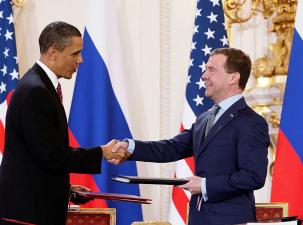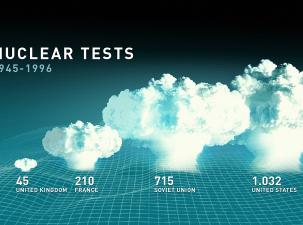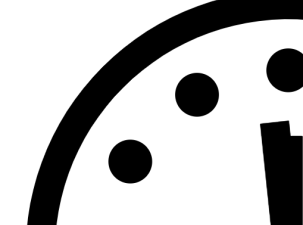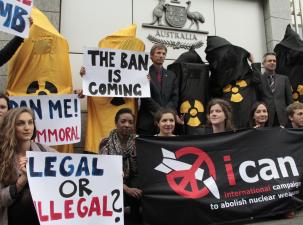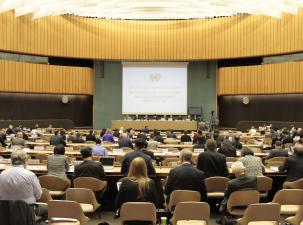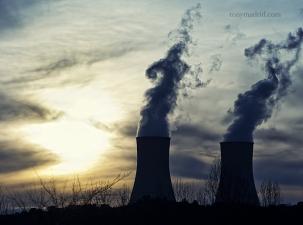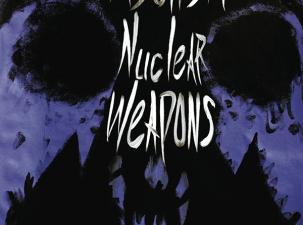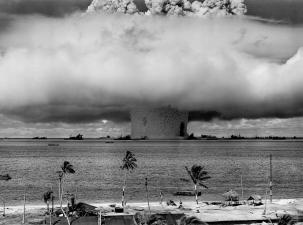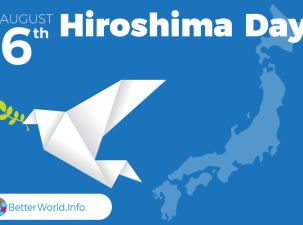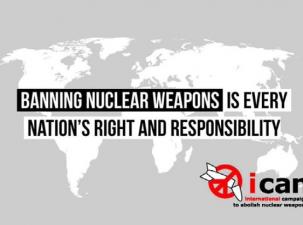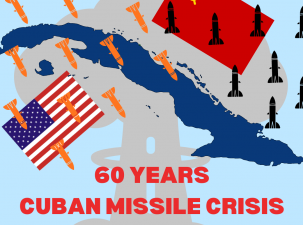Nuclear Disarmament

➡️ ANTI-NUCLEAR WEAPONS & DISARMAMENT
Nuclear missiles are weapons of mass destruction: even just one nuclear warhead is capable of destroying an entire city and all of its inhabitants.
Radiation exposure results in devastating long-term health implications, birth defects, and untold damage to the environment and atmosphere. Fallout contamination remains a hazard for many decades.
A study by International Physicians for the Prevention of Nuclear War calculated that the detonation of 100 nukes would lead to a nuclear winter and the starvation of 2 billion people. The predicted 9% reduction in rainfall and cooling temperatures would be enough to trigger global crop failures and famine.
Jump straight to our resources on ➡️ Nuclear Disarmament
Explore our comprehensive guides on -
-
Anti-nuclear Weapon Campaigns & Organisations
-
The Enormous Dangers & Costs of Nuclear Proliferation
-
The Dangers of Nuclear Testing
-
The Nine Nuclear States
-
Nuclear Weapon Divestment
-
The Doomsday Clock
-
Nuclear Energy - A Fig Leaf for the Nuclear Weapons Industry
*****
Nuclear missile proliferation reached its peak in the Cold War. However, there are still 13,000 nuclear warheads in the possession of 9 nations today – a notable increase from 30 years ago. Of these 13,000 missiles, Russia and the U.S. maintain a gigantic 91% share. Peace experts are rightly concerned about increasingly tense relations between Russia and the U.S., massive military buildup, and cold war mentality from both sides.
"So long as any state has nuclear weapons, others will want them. So long as any such weapons remain, it defies credibility that they will not one day be used, by accident, miscalculation or design… It is sheer luck that the world has escaped such catastrophe until now." - Canberra Commission, 1996
Better World Info supports a total ban on the proliferation, stockpiling and use of all nuclear weapons. Aside from their ability to cause catastrophic harm and their threat to global security, nukes are grotesquely expensive. Billions are drained from essential social, health, and environmental budgets. While citizens suffer under deepening austerity measures, poverty, and lack of healthcare, governments sit on top of nuclear stockpiles purely for posturing sake.
We are gaslighted by governments who claim nuclear programs are necessary to counter threats to our national security. Imminent threats to our planet include climate change, biodiversity loss, pollution, disease, water scarcity, and food insecurity – Nuclear weapons cannot solve any of these issues.
The ongoing Russia-Ukraine war is a timely example of how nuclear war threats and the danger of attacks on the Zaporizhzhia Nuclear Power Plant could easily lead to catastrophe.
German speakers can visit our partner site, Bessere Welt Info, where you will find over 2,000 resources in our category Nuklearwaffen and learn about American nukes stationed in Büchel, Germany.
*****

Where Can I find News on Nuclear Weapons?
Finding impartial and reliable news on controversial issues such as nuclear weapons can be tricky as governments and the media try to downplay the risks and costs. Campaigns, protests, and events saying no to nukes are underreported and receive little attention outside peace circles.
Better World Info is a central knowledge platform providing over 250 news sources from nuclear experts, campaigners, peace advocates, and defence and security professionals. Discover blogs, magazines, NGO coverage, YouTube channels, and top social media accounts to follow on Twitter and Facebook. Be sure to check out and follow our Twitter lists on nuclear weapons for up-to-the-minute comments and analysis from experts at IPPNW, CNDUK, ICAN, and many others.
Explore our ICAN & CND platform for 10,000 resources on their nuclear disarmament campaigns and the inspiring work of key CND members such as Kate Hudson, Jeremy Corbyn, and the late Bruce Kent. Discover other excellent organisations fighting against nuclear proliferation, including Beyond Nuclear, Global Zero, ICAN, IPPNW, PNND, Abolition2000, and many others.
We promote and celebrate awareness days such as the International Day against Nuclear Tests and Nuclear Abolition Day, which both urgently call for a nuclear-weapon-free world. Discover the horrors of the 1945 U.S. nuclear bombings in Hiroshima and Nagasaki, which resulted in 105,000 fatalities and a further 94,000 injured. Both cities were left with a legacy of serious long-term health and environmental issues.

The Dangers & Costs of Nuclear Weapons
FINANCIAL COSTS
In 2023, the nine nuclear states spent, or rather squandered, a combined total of $91.4 billion on nuclear weapons! Over the past 5 years spending has increased by 34% in a dangerous and worrying trend. Meanwhile, economies are still recovering from the Covid-19 pandemic, we are in the midst of a climate crisis, global food and fuel prices have soared, and we are experiencing the greatest number of armed conflicts in decades.
The U.S. came in first place, spending a gigantic $51.5 billion. Meanwhile, American citizens endured yet another year without free healthcare. They also rank the highest for income inequality of all the G7 nations, are in the grips of a national debt crisis, and 11% of the population live in poverty.
HUMAN & ENVIRONMENTAL DISASTER
Atomic bombs are the only devices invented which are capable of destroying all life on Earth. They pose the single largest threat to mankind and our environment. Even a small-scale nuclear war would result in decades of damage to our climate and ecosystems.
Nuclear weapon stockpiling puts mankind on the brink of disaster, at the mercy of world leaders and their 'red buttons'. Just one small error in communication or misunderstanding could set the world on fire, and it almost has. During the 1962 Cuban Missile Crisis, the U.S. and the former Soviet Union came within a hair's breadth of nuclear catastrophe. Learn about other nuclear close calls, accidents, and the insane military strategy known as mutually assured destruction (MAD).
Nuclear threat escalation has placed the planet at the highest risk of nuclear war since the Cold War. The No First Use pledge has been adopted by some countries to prevent such escalation. However, it is not legally binding. On the contrary, NATO's First Strike policy is part of military doctrine and serves only to add fuel to the fire.
NATO insists their nuclear forces and weapons of mass murder are to maintain peace and deterrence. They state that they will remain in a nuclear alliance as long as nuclear weapons exist - yet make no attempt to reduce or ban them.
It is globally agreed that no state would be able to control or handle the effects of even a single nuclear missile detonation in an urban area. The huge health and environmental needs, both short and long-term, would be left unmet. Read more about radiation sickness, nuclear criminality and ecocide, nuclear holocausts, and nuclear winters.

DANGERS OF NUCLEAR TESTING
Since 1945, 2,000 nuclear tests have been carried out, almost half by the U.S. Radiation contamination from nuclear tests leads to increased rates of cancer in fallout zones, and large areas of land remain radioactive for decades after. Women and children are disproportionately affected by the effects of ionizing radiation. Given that no level of exposure is safe, the only acceptable level is zero.
In recent years, North Korea's nuclear weapons testing has become concerning. Estimates state that the energy released by one test in 2017 was 7-10 times stronger than those dropped in Hiroshima and Nagasaki.
Which Countries have Nuclear Weapons?
Russia, with the largest stockpile, possesses an enormous 4,380 nuclear warheads. The risk of nuclear war over Ukraine is very real. Putin, on multiple occasions, has threatened the use of nuclear weapons in the case of NATO intervention and has created a nuclear safety crisis by allowing attacks to take place near the Zaporizhzhia Nuclear Power Plant. In early 2023, Russia suspended its participation in the nuclear arms treaty New START.
In second place is the U.S.A., with an equally terrifying 3,708 nuclear weapons at home and abroad in the Netherlands, Germany, Turkey, Italy, and Belgium. Learn more about outrageous U.S. nuclear forces expenditure, various Nuclear Posture Reviews, its Trident submarines, the anti-nuke NGOs fighting to stop the madness, and their withdrawal from the INF treaty.
China, with 600 nuclear weapons in its arsenal, ranks third. France, with 300, ranks as fourth, and despite a large majority of citizens opposing the French nuclear weapons program, the government has resisted signing any treaty supporting nuclear disarmament.

Closely behind France is the UK, which is currently in possession of 225 nuclear weapons, with plans to increase this to 260 in the next few years. Learn about the controversial nuclear program Trident, a round-the-clock submarine nuclear missile system - a recent replacement costing British taxpayers £205 billion.
Opposition to nuclear weapons in the UK is strong, especially given the high levels of austerity measures, poverty, and deepening inequality. CNDUK is an exemplary NGO fighting for nuclear disarmament and tighter arms regulations. Learn more about British nuclear weapons facilities such as Aldermaston, Devonport, and Greenham Common, as well as the peace camps and protests which regularly take place there.
India and Pakistan possess a total of 334 nuclear weapons between them, with roughly equal numbers each.
The secretive nuclear weapons program in Israel is of extra concern, given the fragility of the situation between Israel and Palestine. Israel's nuclear weapon figure is estimated to be 90. The Iran Nuclear Deal was designed to control tensions between Israel and Iran. In an effort to halt Iran's nuclear program and to promote stability in the region, the arms control agreement provided billions in sanctions relief. Learn more about U.S. withdrawal, claims of Iran's non-compliance, attempts to recommit, and ongoing talks.
North Korean data is somewhat ambiguous. The figure lies somewhere between 20-50 nuclear weapons. They are the only state to have conducted weapons testing in the 21st century.
South Africa is the only country to surrender their nuclear weapons voluntarily. After closing its program and dismantling the weapons, they signed the NPT and officially became a non-nuclear country.

Can we Solve the Nuclear Weapons Issue?
Organisations, campaigns, and treaties are fighting for nuclear disarmament and securing the safety of future generations and our planet.
Nobel Peace Prize winner ICAN is a huge international campaign working to fully implement the landmark Treaty on the Prohibition of Nuclear Weapons (TPNW). The TPNW is the first legally binding international agreement prohibiting nuclear weapons - 95 states have signed the agreement already. However, all nuclear states on the UN Security Council remain unsigned. ICAN also hosts the Nuclear Ban Forum and Meeting of the State Parties to discuss action plans and the monitoring and disarmament progress.
Learn more about the Treaty on the Non-Proliferation of Nuclear Weapons (NPT), the NGOs and institutes involved, and the various NPT Review Conferences over the years.
Activist campaign Abolition 2000 networks organisations from around the world and encourages governments to negotiate a nuclear weapons convention through pledges, treaties, an international registry, monitoring of nuclear energy facilities, and the creation of nuclear-free zones. These nuclear-weapon-free zones are areas where nuclear weapons are outright banned. This also includes manufacturing, testing, and transporting. There are currently five nuclear-weapon-free zones which cover most of the Southern Hemisphere and large parts of Central Asia. Mongolia and Antarctica have their own special nuclear-free status.
The New START Treaty (Strategic Arms Reduction Treaty) is the last nuclear arms agreement remaining between the U.S. and Russia. It was designed to cap the number of nuclear warheads that both countries could potentially deploy. Blaming non-compliance from the U.S., Russia made the decision to suspend its participation in the treaty. As 90% of the world's nuclear weapons are in the possession of these governments, this news is deeply concerning.
The Intermediate-Range Nuclear Forces Treaty (INF) between the U.S. and Russia was dissolved in 2018 when the U.S. withdrew, hiding behind claims of Russian non-compliance.
Divestment is one of the best ways to halt the nuclear weapons industry. Governments, universities, financial institutions, and even churches all profit from their investments in this industry of death. All five major high street banks in the UK have investments in the nuclear arms business, facilitating the modernisation and growth of nuclear arsenals around the world.
Don't Bank on the Bomb revealed that financial institutions funded $747 billion to nuclear weapons producers between January 2020 and July 2022 - a $65 billion increase from the previous year.

Nuclear Disarmament for a Better World
Every year, the Doomsday Clock is set by The Bulletin of Atomic Scientists. This year it was moved forward to 89 seconds to midnight. This signifies that we are now the closest ever to global catastrophe. The nuclear weapons proliferation, climate crisis, bio-threats, disinformation and disruptive technologies played an important part, but largely, the reasoning was down to the risk of nuclear escalation in the Russia-Ukraine war.
It is more important now than ever for our world leaders to step up and commit to a nuclear-weapon-free world. Under the thin veil of nuclear deterrence, nuclear stockpiles are really just a plot for potential mass murder and genocide. We must put pressure on our governments to show them that we do not support wild spending on nuclear weapons programs. Meanwhile, our social security networks are plundered, and our healthcare systems are failing.
WHAT CAN YOU DO TO HELP?
-
Share this guide with your colleagues, friends, and family.
-
Boycott banks and institutions that finance the nuclear weapons industry.
-
Join a peace movement near you and make your voice heard.
-
Stay informed by using resources such as this one.
-
Become active on social media to raise awareness of how everyone can help.
-
Support events such as Hiroshima Day and Nuclear Abolition Day.
-
Consider donating to an anti-nuclear campaign to help fund their activities.
-
Better World Info is an open platform - anti-nuclear weapons experts and activists are invited to contribute their knowledge! By providing links to studies, reports, and campaigns, everyone can help end the nuclear madness - specialist guidance is welcome.
"It is a measure of the arrogance of nations - but especially of the nuclear-weapon states - to assert that a nuclear-weapons-free world is impossible when, in fact, ninety-five percent of the nations of the world already are nuclear free." - Retired General and nuclear abolition advocate George Lee Butler
*****
Better World Info is an open platform – We invite experts, NGOs, campaigners, and activists to contribute their knowledge and top resources! We are a constantly expanding, work-in-progress, committed to spreading reliable, critical, and investigative resources to help create an informed, knowledgeable, and curious world.
Author: Rachael Mellor, 27.05.23 (Updated 25.04.25) licensed under CC BY-SA 4.0
For further reading on Nuclear Disarmament see below ⬇️
Info on Nuclear Disarmament
- Nuke NEWS[318]
- DANGERS & COSTS[718]
- Nukes by COUNTRY[1860]
- General INFO on Nukes Worldwide[484]
- SOLUTIONS / Campaigns & Initiatives[1658]
